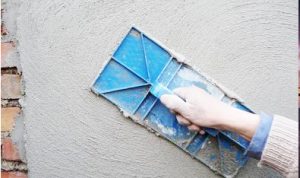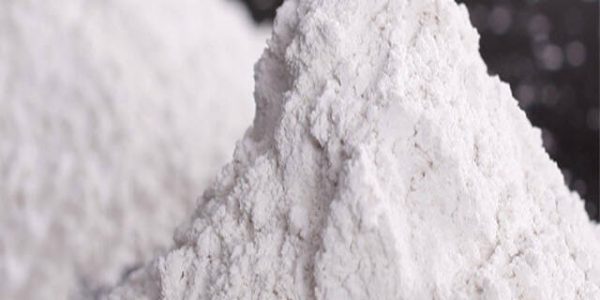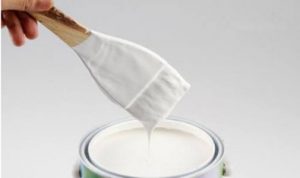
DRY MORTAR
CP series thickening and water retension agent used in dry mixing mortar is made from high grade natural bentonite( the main content is montmorillonite)
Bentonite mud, if you choose Camp Shinning, it must be the right choice. Because of its good suspension performance, your project can get a comprehensive guarantee in technology. In the field of the oil field, Camp Shinning’s bentonite is also known as organophilic clay bentonite, organoclay rheological additive, suspending agent, and thixotropic agent.

If you have ever wondered, “What is bentonite drilling mud?” you’re not alone. Many oilfield contractors are confused by all of the options available. Before deciding which one to use, make sure you know exactly what bentonite mud is, how it is used in drilling, and what it does for your well. Read on to find out! I’m going to take you through the different options for drilling mud.
Sodium bentonite
Sodium bentonite is a natural mineral that absorbs water, forming a slurry-like substance. Sodium bentonite has several applications in oil and gas drilling, geotechnical investigations, and environmental remediation. It is also a sealant and can be used to plug old wells or landfills. Sodium bentonite is widely used in oil and gas drilling.
It stabilizes the borehole to prevent loss of sweet and salt water during drilling. This material also prevents formation pressure and carries rock cuttings to the surface. Sodium bentonite drilling mud is based on a specific ratio of water to bentonite. The quality of water is critical for the performance of bentonite. Water is 95% water and sodium bentonite makes up only 1%.
When you think of drilling mud, the term probably conjures up images of dirty, wet dirt. But what is drilling mud, exactly? It is a carefully engineered drilling fluid that expands to 10 times its original volume when mixed with water. Its viscosity makes it a great lubricant and drill-bit lubricant, while its chemical composition resembles that of clay.
High-quality bentonite for water well drilling requires 30 minutes of mixing through a mud pump. Water with a pH between 8.5 and 9.5 is ideal. Harder water may not hydrate the bentonite properly, so you should adjust the viscosity of the drilling fluid to compensate for this.
Bentonite mud and Drilling Fluids
One of the most common types of bentonite mud drilling fluid is an organoclay bentonite slurry. However, if a drilling site is located in an environmentally toxic region, special disposal may be required. In such cases, the waste must be treated, dewatered, and transported to a suitable disposal site. In addition to the drilling fluid, grouting can be added. Special pumps may also be required.
Properties of bentonite
Bentonite mud reacts with a number of organic materials to produce compounds that are useful as gelling agents in drilling mud. The strength of the mud’s gel is an important feature since it will carry drilling cuttings during the process. Several polymers are also commonly added to drilling mud, which can further modify the rheological behavior of the drilling fluid. These compounds are known as bentonite additives.
Its viscosity
One of the most important characteristics of a drilling mud is its viscosity. The higher the viscosity, the greater the tendency of the fluid to suspend drill cuttings. Drilling fluids are usually tested for gel strength after resting for 10 seconds. A high gel strength indicates that the drilling fluid has a high ability to gel. This property is used in drilling mud development to improve the slurry’s ability to transport drilling cuttings to the surface.
Most high-quality bentonite comes in 23 kilogram or 50-pound sacks. A typical amount of bentonite to use for drilling mud ranges from half a sack per three hundred and seventy gallons of drilling fluid. The best viscosity results from thickly mixing the bentonite. To find the correct amount of bentonite, visit a bentonite supplier or consult the manufacturer’s instructions.
bentonite mud , bentonite drilling mud,bentonite clay drilling mud, bentonite drilling mud suppliers ,bentonite drilling mud properties
Its cation-exchange properties
Bentonite is classified into two kinds: sodium bentonite and calcium bentonite. These two forms have different cation-exchange properties and are used for various applications, including oil and water well drilling muds. Bentonite can also be found in pet litter, foundry molds, and iron ore pelletization.
Its uses as a rheology modifier
The properties of drilling fluids are dependent on their rheology, which should be stable under a wide range of conditions. Testing and measurement of mud rheology are conducted continuously throughout the drilling process, and the desired properties must be optimized for the drilling program. The rheological properties of drilling mud depend on the amount of bentonite added to it. Other factors influencing rheology include downhole temperature and pressure. Some muds have a low carrying capacity of drilled cuttings, which may require the replacement of bentonite. Several research studies have been conducted to address this problem.
Various studies have demonstrated that bentonite can modify drilling fluid rheological and filtration properties. However, bentonite-based muds exhibit different ROPs and should be used with caution, as these results may not be representative of actual drilling conditions.
How Do You Mix Bentonite Mud?
When mixing bentonite mud, you should consider adding Xanthan gum or rheology modifiers. Also, you should take into account the pH of the water you’re using. Finally, make sure to separate the platelets. This article will also show you how to use a mixing pump. There are several ways to mix bentonite mud. Here are a few of the most common ones.
Organophilic Clay bentonite mud is a rheology modifier
Organophilic Clay is a natural organic bentoniter commonly used in oilfield chemicals. Its functions include modifying rheology, controlling fluid loss, and enhancing surface and interior properties of drilling fluids. However, bentonite mud is prone to high temperatures and is not tolerant of the contamination that may occur in the field.
This organoclay is a highly dispersible and non-clarified polymer that improves rheology in a variety of water-based and oil based systems. Its low molecular weight and inert nature make it suitable for environmentally sensitive areas. Traditionally, diesel was used in muds, but today, environmental concerns have led to the use of synthetics, esters, and low-toxicity mineral oils.
bentonite mud , bentonite drilling mud,bentonite clay drilling mud, bentonite drilling mud suppliers ,bentonite drilling mud properties
pH of the water used to mix bentonite mud
When mixing bentonite mud, the pH level of the water used must be above 7.5. This water should also be fresh and of a pH ranging from 8.5 to 9.5. Some drillers add soda ash to the water before mixing, while others fill their tanks at a local shop or other unknown source. However, the pH of the water used to mix the mud is essential to its effectiveness.
The pH level of the water used to mix bentonits is important because the mud’s performance is affected by the purity of the water used in drilling operations. If the water is highly acidic or hard, it must be treated with soda ash to achieve a pH of around 8.5. The water should also have a high alkalinity level to avoid erosive erosion of the wellbore and the formation.
While mixing bentonite mud, you must consider the particle size. The size of bentonite particles depends on their mineralogy, so it’s important to get the right ratio of sodium and calcium bentonite. Stirring increases the size of the bentonite platelets by increasing the ratio of sodium versus calcium smectite. This increases the amount of space between bentonite platelets and, ultimately, reduces the viscosity.
What is Bentonite Used For?
You may be asking, “What is bentonite used for?” but you’re not sure what this mineral does for you. There are many uses for this natural substance, including for paints,coatings,inks,grease and oil drilling mud.
bentonite mud , bentonite drilling mud,bentonite clay drilling mud, bentonite drilling mud suppliers ,bentonite drilling mud properties
Sodium bentonite
Sodium bentonite is a naturally occurring clay that is highly swelling. It is used as a clay in various applications due to its high water absorption properties, cation exchange capacity, and organic absorption. This clay has a long list of uses, from kitty litter to sealing dams. It is also used for animal feed. Here are some of the many ways sodium bentonite is used.
Sodium bentonite is a form of Bentonite that contains the sodium ion. It is extremely absorbent and adsorbent, and it draws pollutants and other substances into itself. It also attracts positively charged substances to its negatively charged surface, which is why sodium bentonite is called Swelling Clay.
Calcium bentonites do not swell and are not as good absorbents. The sodium bentonite is often modified to act like sodium bentonites, and the calcium bentonites are known as sodium-beneficiated bentonites. In addition to sodium bentonite, other clays are used in the industry as absorbents. The difference between calcium bentonite and sodium bentonite is the absorbency of the clay.
Calcium bentonite
Another use for calcium bentonite clay is to decolourize oil. Most calcium bentonite clay used in this process is acid activated. This process removes calcium cations from surfaces and edges, increasing the overall negative charge. In industries, sulphuric acid is often used in place of hydrochloric acid, as it is less harsh. Moreover, acid-activated clays are more effective at removing coloured anions.
Bentonite Slurry
Bentonite slurry, also known as organophilic bentonite, is a material used for soil stabilization. It is made of bentonite that maintains its consistency with the help of its electrical bonds. This substance is a jell under undisturbed conditions, and it forms a jelly within 12 hours. Bentonite slurry is used for piling installation in several construction projects, and it is important to know its purpose before using it.
Organophilic bentonite
Distearyl dimethylammonium chloride was added to bentonite in distilled water at 60 oC. The mixture was stirred for one hour at 1600 rpm. After one hour, the mixture was dried at 60 oC. It was then sieved through a 200-mesh sieve to remove impurities. The resulting slurry was named after the clay type, followed by the letter “O” for organophilic.
The main ingredient in organoclay is bentonite, a chemically altered form of the clay mineral montmorillonite. In its natural state, bentonite is capable of absorbing seven times its weight in water. However, after treatment, it can absorb five to 10 percent of its weight in water. Organophilic bentonite slurry contains as much as forty to seventy percent oil or grease.
The strength of the hardened bentonite slurry depends on its composition and the ratio of bentonite and cement in the mixture. Higher strengths tend to have lower plasticity, and a higher ratio of cement to bentonite can achieve an unconfined compressive strength of up to twenty psi within just 28 days. Hence, bentonite slurry is the ideal soil stabilizing liquid.
Bentonite mud is an important ingredient in oil drilling and other industries. It suspends heavy weighting materials effectively, maintains a constant suspension over a wide temperature range, and requires low water and chemical activation. It is used in a variety of applications, including food, paints, coatings, and cat litter. Here are a few examples of its applications. Listed below are a few of its most common uses.
The petroleum industry uses imported bentonite, but this can be problematic for the local industry. It has been noted that mud that is made with local bentonite may be more suitable for drilling in clay-swelling formations. But the petroleum industry needs to investigate the suitability of local bentonite deposits.
In the present study, organophilic clay bentonite to improve its rheological properties. In the presence of the additive, the viscosity, yield point, and gel strength of the mud increased significantly. The results suggest that adding organophilic clay to the local bentonite mud will improve its filtration properties.

CP series thickening and water retension agent used in dry mixing mortar is made from high grade natural bentonite( the main content is montmorillonite)

Our CP series water-borne rheological additive is a kind of natural silicate which main ingredient is hydrophilic and high purified montmorillonite.For its good properties of thixotropy and perfect thickening ability,it can be widely applied to water based coatings,emulsion paint,toothpaste,construction mortar,cosmetic,putty etc.Some grades can also be used to replace HEC,CMC and reduce the cost.

Camp Shinning organophilic clay is a wet process improved viscosifier gelling additive.Organophilic bentonite as a thickening agent in suspension and oilfield chemicals,it could maintains suspension over a wide temperature range in the base oil of diesel oil, mineral oil based invert fluids and synthetic oil.
Tag: bentonite mud , bentonite drilling mud,bentonite clay drilling mud, bentonite drilling mud suppliers ,bentonite drilling mud properties
Email: [email protected] Wechat/Whatsapp: +86-13185071071
